America’s oldest quarantine hospital tied to Philadelphia yellow fever history
Listen-
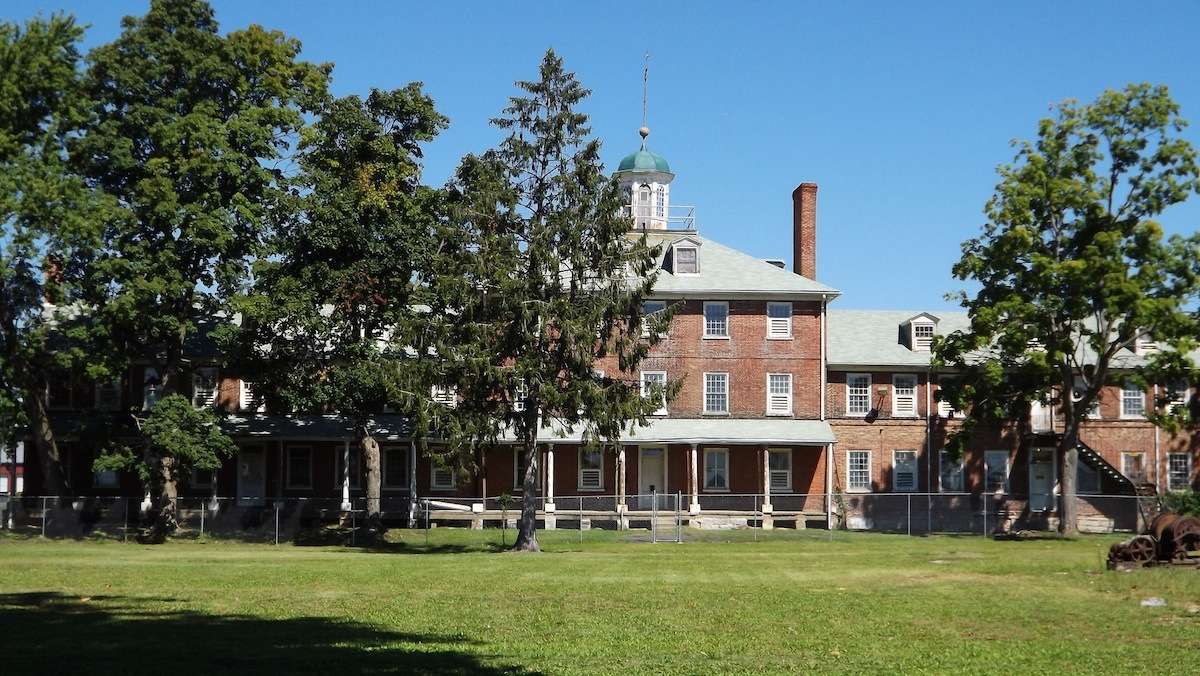
The Lazaretto quarantine hospital sits on the banks of the Delaware in Tinicum Township. (Emma Lee for NewsWorks)
-
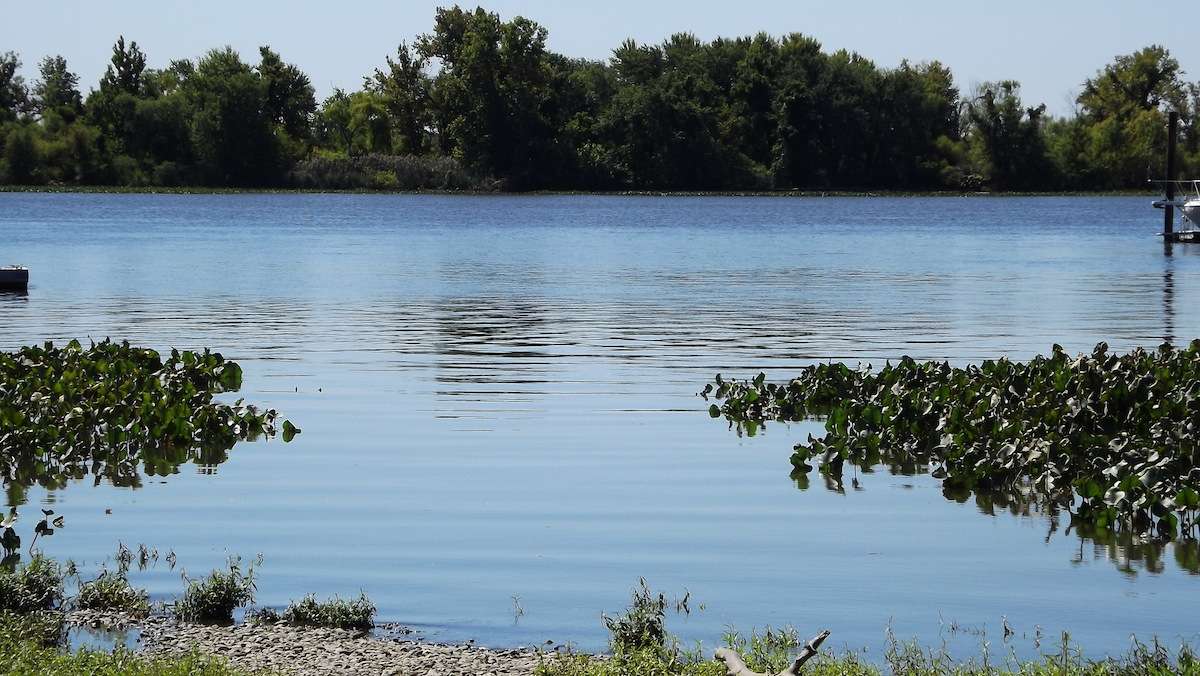
The view from The Lazaretto. Little Tinicum Island is directly across from the dock.
-
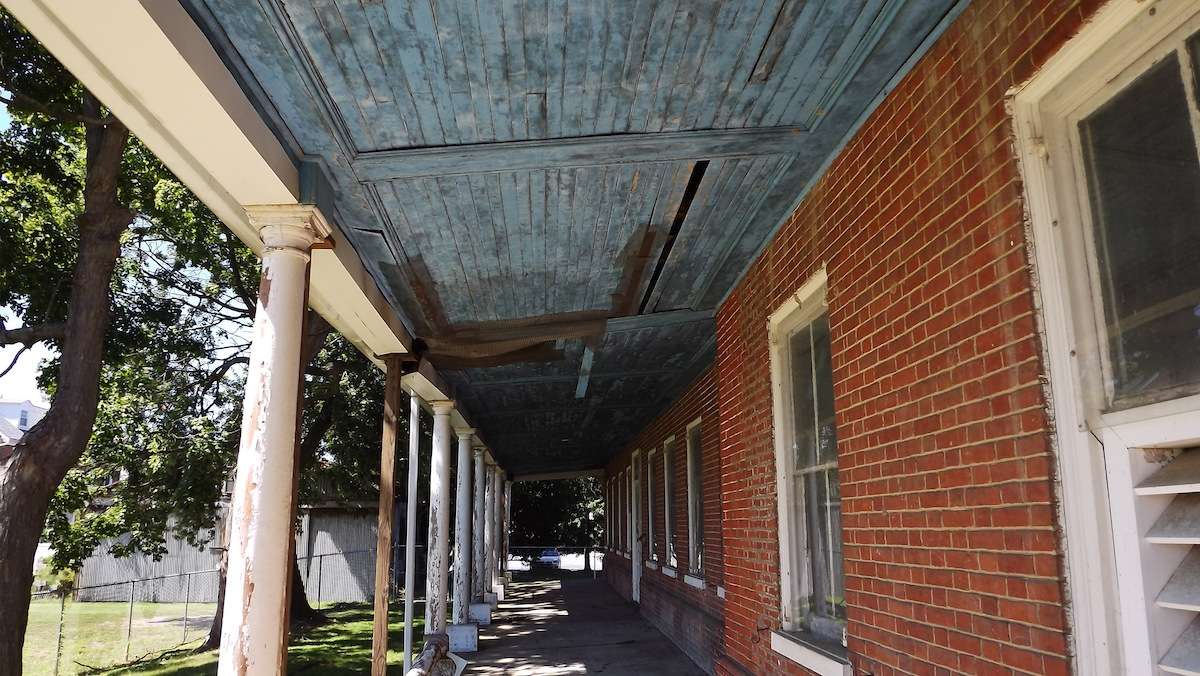
The structure is in need of major repairs. The local historical society and David Barnes are raising money for renovations.
-

A collapsed support column on the porch.
-
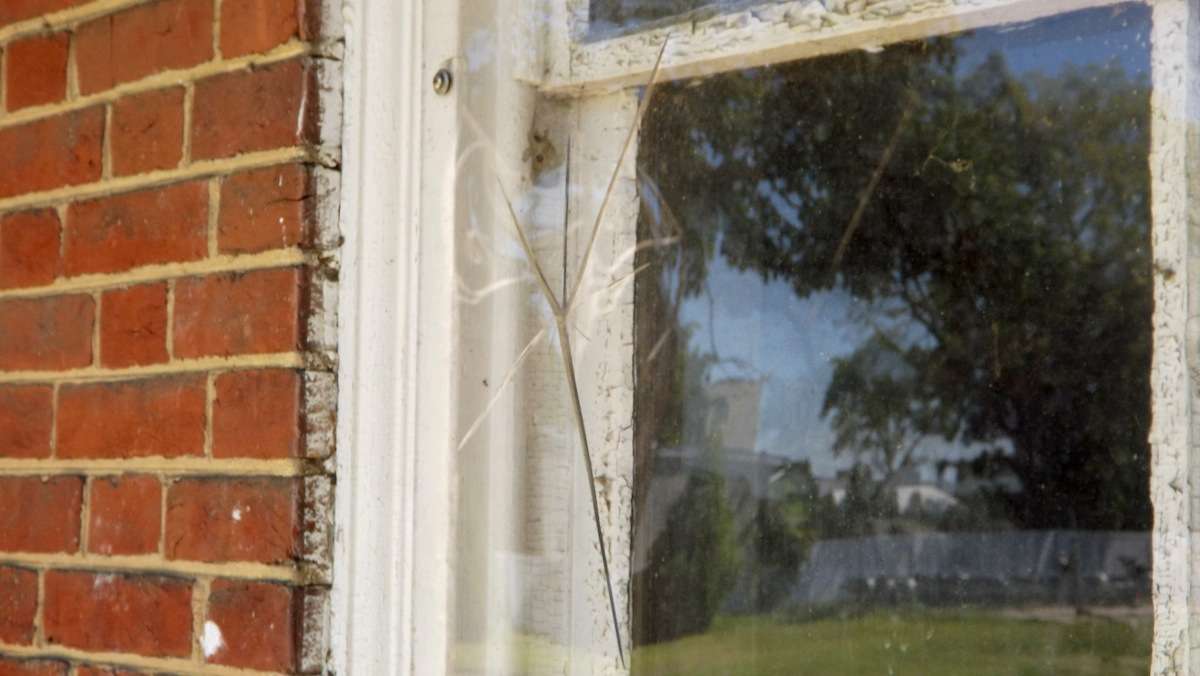
A crack in the plexiglass window covering.
-
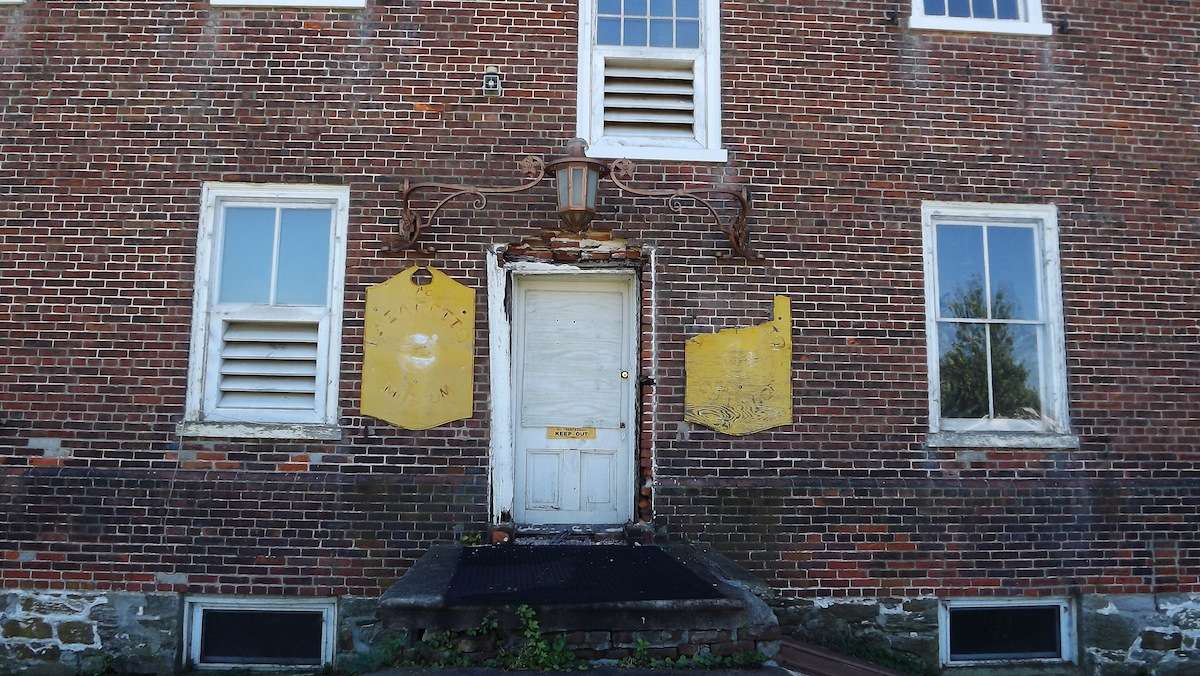
Although it is in need of repairs, the building still bears graceful architectural details from the 1800's.
-
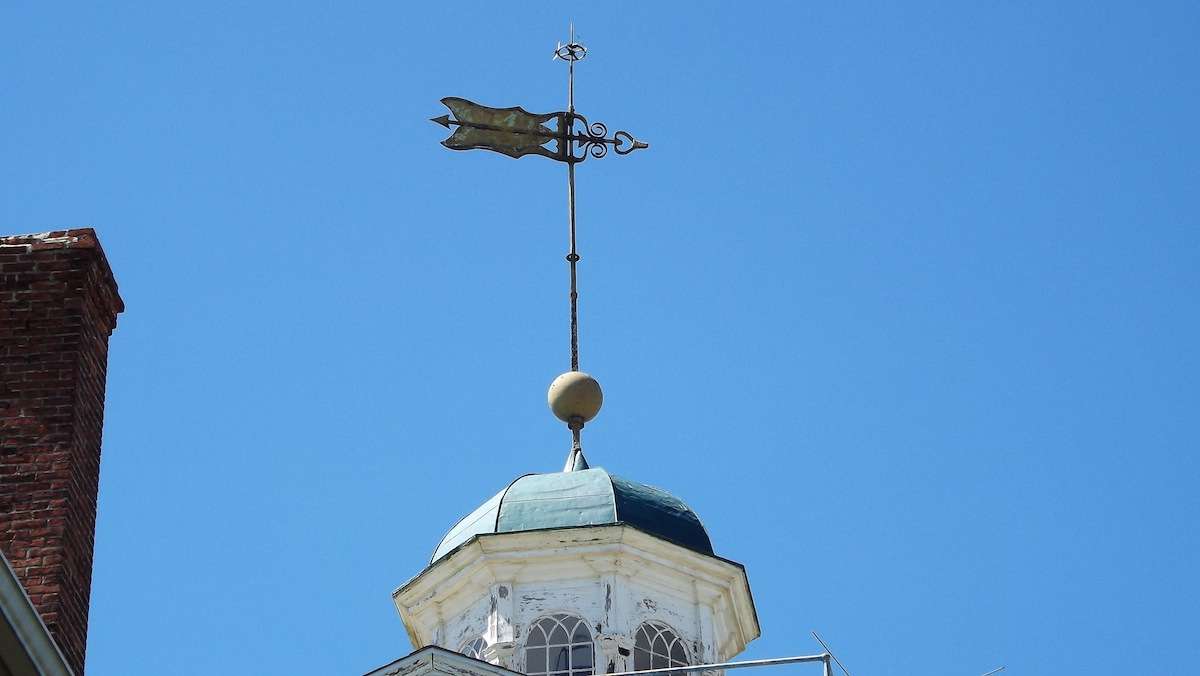
The original weathervane once helped steer tall ships into the dock.
-
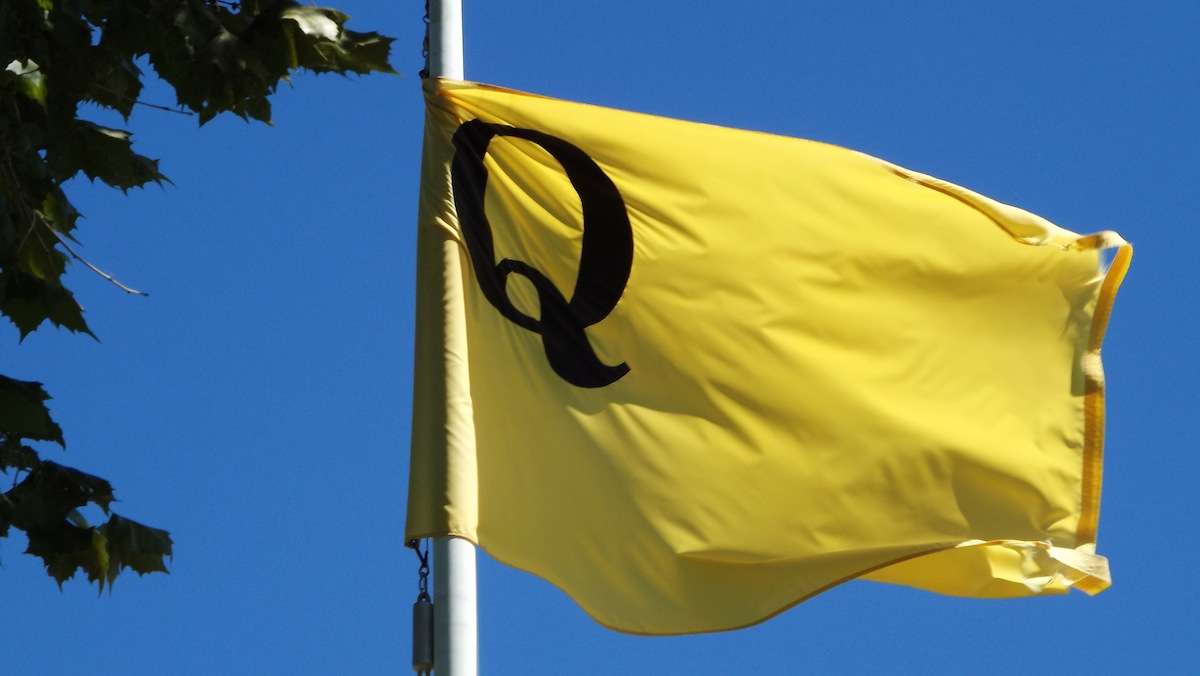
'Q' for quarantine. The flag is an accurate replica of those used to signal ships into the docks for yellow fever inspection.
-

Dr. Robert Hicks, director of the Mutter Museum and Historical Medical Library. In the 1793, Hick's says,
If walls could talk: One building’s story about a crisis that almost wiped out all of Philadelphia.
If you’ve flown into or out of Philadelphia International airport, you’ve probably passed over The Lazaretto, an 18th century building in Essington, Pa.
It was once the official quarantine facility for the port of Philadelphia and is the last structure of its kind in the United States.
The Lazaretto – the name comes from St. Lazarus, the patron saint of lepers – was built in response to a disease outbreak that nearly wiped out the city of Philadelphia and threatened the country’s fledgling democracy.
On the banks of the Delaware, across from the wilds of Little Tinicum Island and a stone’s throw from the airport sits the 211-year-old Lazaretto quarantine hospital.
The Lazaretto is the oldest surviving quarantine hospital in the western hemisphere. Its imposing brick façade is three and a half stories high at it’s tallest. The elegant columned porch stretches 178 feet across.
If you ask University of Pennsylvania historian David Barnes about the Lazaretto, he’ll tell you that he’s a little bit obsessed with the building. Barnes studies the history of public health and uncovered the history of this now abandoned building. “It looks like a Georgian manor house, right on the riverfront”, says Barnes. And if you didn’t know what it was here for you would think, ‘This is a lovely country retreat.’
Barnes first learned about the Lazaretto in 2006 from a colleague who was organizing a site visit for students. At the time he was a specialist on the history of public health in 19th century France. But instead of being drawn to topics closer to the banks of the Seine, the 18th century Lazaretto, perched on the banks of the Delaware, got under his skin.
“I was in the middle of planning my next project and I had several other ideas percolating in my head,” says Barnes. “But I couldn’t stop thinking about the Lazaretto.”
There was very little written about the Lazaretto, even though it is the oldest structure of its kind in the United States, and even though its history is tied to the infamous yellow fever epidemic that devastated Philadelphia in 1793.
Barnes is working on a book about the Lazaretto and its role in the birth of Philadelphia’s public health system and as a maritime quarantine facility.
“In a city where seemingly every building that survives from the 18th century has got a whole library dedicated to it,” he says. “This place had nothing.”
A piece of history
The Lazaretto is a story of what came before — a public health crises that killed one in every five Philadelphians. It was built after a series of yellow fever epidemics that decimated the population of Philadelphia in the 1790s.
The massive building was meant to stand guard on the river, inspecting and detaining ships from foreign ports that might carry diseased cargo, crew or passengers.
Instead of sailing into Philadelphia, ships arriving from abroad were stopped and inspected away from the city. If crew or cargo were thought to be infected, ships would be detained and disinfected. Passengers and crew were taken off and held at the quarantine hospital until they either got better or died.
By the time the hospital opened in 1801 the city had suffered a string of major yellow fever outbreaks. “In 1793, almost 5,000 people were killed. In 1798, it was estimated that more than two-thirds of the city’s population fled, and of those that remained, twenty percent were killed, says Barnes.
In 1793, when yellow fever hit, doctors disagreed about the source of the disease and how to treat it. Famed Philadelphia physician Benjamin Rush, who helped found The College of Physicians of Philadelphia in 1787, was on the front lines of the epidemic. Rush thought the illness was brought on by the foul smells from a pile of rotting coffee left on a dock and treated his patients by purging and bleeding. He kept a detailed diary of the outbreak, recording his battle against an illness that he did not fully understand and could not cure:
“The patients were generally seized with rigors, which were succeeded with a violent fever, and pains in the head and back. The eyes “were inflamed, and had a yellowish cast, and a vomiting almost always attended. “The 3d, 5th and 7th days were mostly critical, and the disease generally terminated on one of them, in life or death.
‘The lethal calling card’
Dr. Robert Hicks is director of the Mutter Museum and Historical Medical Library at the College of Physicians of Philadelphia. “When yellow fever struck, the consequences were absolutely horrific”, says Hicks. “When people began vomiting up their stomach lining, the black vomit, that was the real lethal calling card that it has arrived.”
Accounts of the 1793 outbreak painted the image of a city in turmoil. Residents were terrified of contagion and anyone who was able to leave the city escaped to less populated areas. Those who could not escape avoided contact with fellow citizens.
“You might have been alarmed as a visitor to see corpses outside of houses that had simply been left at the curb” says Hicks. If you went into businesses you might find people dying who had been left to fend for themselves. It was a pretty ghastly scene.
Philadelphia was still the capitol of the United States during the 1793 outbreak, with George Washington away at Mt. Vernon, the epidemic shut down the US government. Most members of Congress evacuated and they were uncertain if they had the authority to run the government outside of the capitol. “So what they did”, says Hicks, “was nothing”.
What we know now
Today we know that you can’t get yellow fever through person-to-person contact. Like malaria, it’s caused by a virus carried by mosquitos. The disease was probably brought into Philadelphia on a ship that had been through the West Indies. Infected mosquitos and larvae could survive in stagnant water supplies in the ship.
Once the ship docked, anyone living or working in the densely populated area around the piers was fair game for the mosquitos.
The Lazaretto was not Philadelphia’s first maritime quarantine facility. During the 1790s there was a quarantine hospital, sometimes called the marine hospital, at Fort Mifflin near what is now the Navy Yard complex. But by the end of the 18th century, with the city traumatized by deadly yellow fever outbreaks in 1793, 1797, 1798 and 1799, public health officials felt that changes must be made.
It was clear that this quarantine wasn’t working, says Barnes. “So the city decided that it needed a new quarantine facility farther away. The old one was simply too close to the city and it was too easy for people from the city to have contact with the ships and the passengers that were undergoing quarantine.”
When the new Lazaretto opened in the spring of 1801 it was one of the largest buildings in the United States. It had two wings for patients. The three-story center of the building housed the administrative offices that could be closed off from the wings to prevent the spread of contagions. At the time it was state of the art. It remained in use as the official quarantine facility for the Port of Philadelphia until 1895.
“It’s a little difficult to get into the minds of doctors in late 1700s to see what it was like”, says Hicks. We can say now ‘gee, if only they knew about mosquitos. If they had good microscopes they could figure this out.’ But the whole medical picture is in some ways is so removed from the way we think about health today.”
The Lazaretto did work, by default. Keeping ships farther away from the city, kept the mosquitos away from the bustling Old City docks.
It was not until 1900 that mosquitos were proved to be the cause of yellow fever. While medical hindsight is 20/20, it’s hard to imagine what people will say in a few hundred years about the way we deal with disease we don’t fully understand today.
Correction: In a previous versionof the article the Lazaretto was incorrectly identified as the “last standing” quarantine hospital in the US. It is the oldest surviving quarantine hospital in the western hemisphere.
WHYY is your source for fact-based, in-depth journalism and information. As a nonprofit organization, we rely on financial support from readers like you. Please give today.



